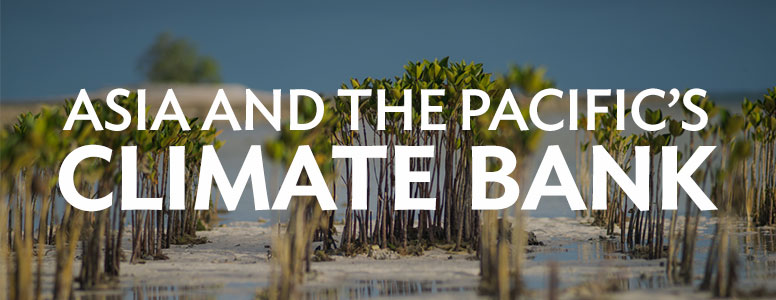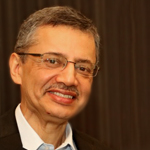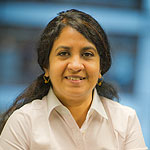Education in Asia and the Pacific: Your Questions Answered
Brajesh Panth, Chief of ADB’s Education Sector Group, discusses education challenges and how ADB is helping through financing and knowledge sharing.
Contents
What role has ADB played in promoting primary and secondary education in developing Asia?
ADB is supporting primary and secondary education in 19 of its developing member countries (DMCs). While most countries in Asia Pacific have achieved almost universal primary education, many have yet to achieve universal secondary education. The biggest challenge is that despite good attendance rates, students are not learning effectively. This has been exacerbated by the COVID-19 pandemic. Addressing this, along with inequality in education provision, requires significant investment in quality universal secondary education.
ADB supports the development of critical education infrastructure, especially after natural disasters. The Cyclone Pam School Reconstruction Project in Vanuatu ($5 million), and the Disaster Resilience of Schools Project in Nepal ($15 million) are recent examples. Some projects support disaster preparedness efforts. In Armenia, the $17.7 million Seismic Safety Improvement Program supports construction of earthquake-resilient schools.
ADB school projects promote student learning, equity, improved financing, and governance. The bank’s education sector has pioneered the Results Based Lending (RLB) model (where financing is contingent on agreed outcomes) and supports 16 RBL programs, including 9 ongoing with a total value of $3.35 billion. RBL indicators linked to disbursement are agreed with the government. This approach promotes reform in education, boosting quality, access, and management. Focusing on 21st century skills, ADB will in future support more programs that use digital learning, and prioritize science, technology, engineering, the arts and mathematics (STEAM).
What impact has the COVID-19 pandemic had on education in developing Asia?
ADB estimates that schools in developing Asia were closed for 272 days on average, or 73% of learning time, between February 2020 and October 2021. The average length of school closures was particularly long in South Asia (375 days) and shorter in the Pacific (42 days). Such extensive closure of schools has led to a monumental learning gap and loss of future earnings estimated at over $3 trillion.
Many countries in Asia Pacific compensated by moving to online learning. Wide inequity in access, particularly in rural areas and among the poor, meant many students were unable to take advantage of schooling online, leading to higher drop-out rates. It is important to turn this learning crisis into an opportunity, prioritizing reforms and boosting financing that promotes learning for all.
Falling Further Behind: The Cost of COVID-19 School Closures by Gender and Wealth
There’s huge inequity in access, so does ADB assist the very poorest and most marginalized to benefit from education?
ADB’s focus on school education aims to improve quality and governance and reduce inequality in the sector. Over the past decades the bank has worked to improve access to education by supporting the construction of new schools, the recruitment of teachers, and the supply of learning materials. Stimulating school enrollment rates has also been a priority. This has included cash transfers, stipends, feeding programs, and improved water and sanitation facilities in schools.
Does a country like Pakistan need to up its game educationally if it is to nurture a successful knowledge economy?
Investment in quality education is clearly linked to economic growth. Pakistan, with its large, youthful population, can benefit enormously from improved education to allow it to maximize its growth potential. This requires investment in human capital to create lifelong learners who can contribute to a modern economy. ADB’s Sindh Secondary Education Project is expanding educational opportunities in secondary education. The bank’s Social Protection Development Program in Pakistan focuses on increasing primary and secondary school enrollment. A program on skills development in Punjab will focus on workforce development in key sectors like information and communication technology, light engineering, food processing, tourism, construction, textiles, and health.
-
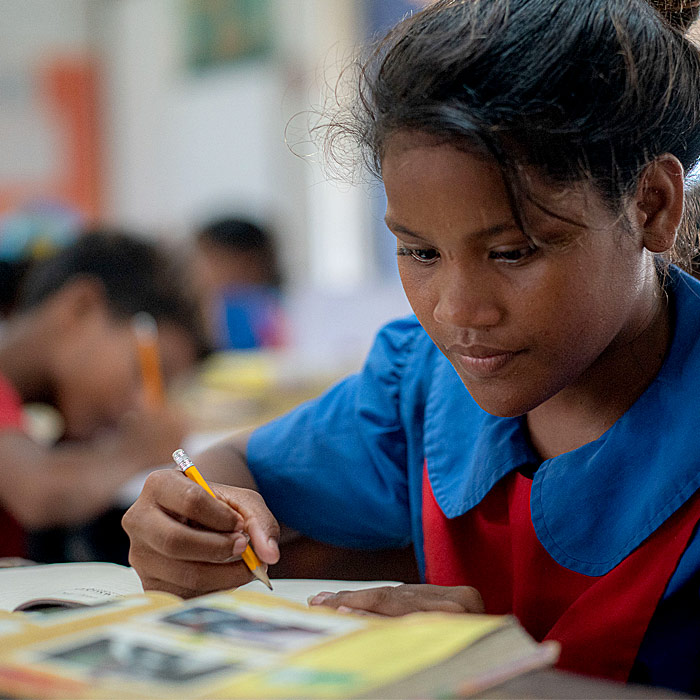
Promoting equity and inclusivity in education, particularly for women and the marginalized, is
critical to education for sustainable development. -
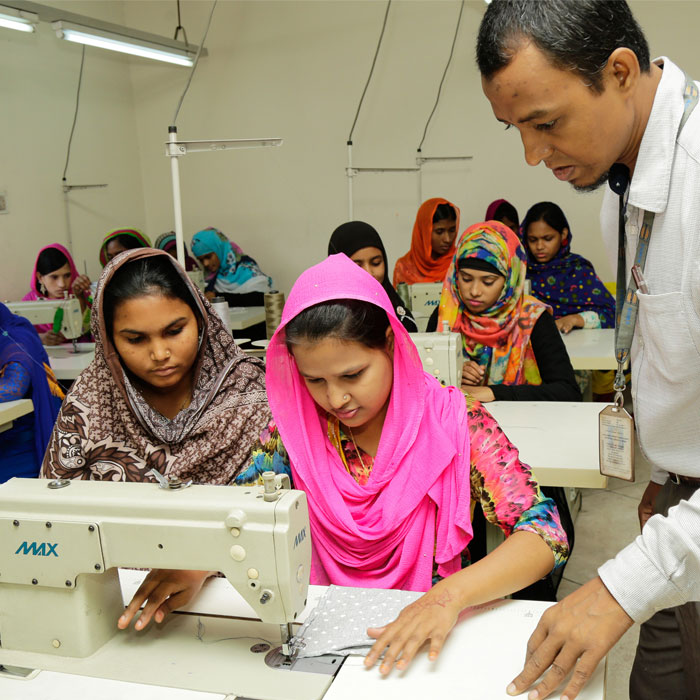
Asia and the Pacific need educated populations with marketable skills if economies are to move up the value chain and compete in a globalized world.
Will developing countries in the region reach their education-related Sustainable Development Goal targets by 2030?
In terms of Sustainable Development Goal 4, education access, including completion and gender parity, has continued to improve at all levels of education with significant variation across the region. A greater challenge is to improve learning outcomes. Viet Nam has demonstrated that it is possible to improve the quality of education to a level that wealthy countries have enjoyed for a long time.
In countries like Malaysia and Thailand that are stuck in the middle-income trap, boosted learning outcomes can play a transformational role in accelerating inclusive growth. The biggest challenge for low, lower-middle, and upper middle-income countries, therefore, is to improve learning outcomes at all levels of education. Another key challenge is to improve digital, non-cognitive, and 21st century skills among learners, in addition to cognitive skills.
Have recent strides in digitalization been good news for the education sector in the region?
The regional switch to online learning during the COVID-19 pandemic demonstrated the promise, as well as the limitations, of digital learning. Where internet connectivity is good and teachers can manage online learning, studying continued. But in countries where this wasn’t the case, learning and earning losses were significant. The pandemic accelerated the pace of digital learning, indicating that hybrid learning is the future.
Digital learning offers tremendous opportunities to scale up learning and increase equity, but to be effective it needs improvements in policy, digital infrastructure, capacity, and public-private partnerships that can deliver such learning. ADB supports digital learning through financing, knowledge, and partnerships.
How can vocational education be better linked to the specific needs of industry and commerce in Asia’s rapidly growing economies?
Emerging labor market needs have to be identified in the context of rapidly changing technology and the urgency to ensure sustainability. Then the private sector must have a key role in educational planning and delivery. This must include work-based training as it is key to linking vocational training to the needs of industry. There then needs to be a significant increase in vocational education to deliver the skills modern economies need. Innovative financing and enhancing equity in vocational education are also key components.
ADB supports vocational education, for example this program in Bangladesh. New institutions are needed to support companies in setting up work-based training arrangements. Vocational skills training should be closely linked to industry. In short, the key to linking vocational education to economic needs is structured cooperation with industry in education planning and delivery. This should be underpinned by enabling policies, supportive institutions, and proper labor market data.
What role would ADB like the private sector to play in increasing the quantity and quality of education in Asia and the Pacific?
Private schools are playing a critical role in expanding access to and the quality of education, particularly where DMCs are unable to mobilize adequate public financing. So private schools need to be supported and managed in a transparent and accountable manner. Where governance capacity is weak, countries can partner with the private sector to help operate public schools more efficiently and effectively. ADB is supporting Pakistan to work with education management companies. These companies often manage and operate public schools, helping to expand access and the quality of education.
The private sector can also play an important role by offering support, logistics, and procurement services. This can include facility and premises management as well as provision of cost-effective solutions. To ensure public consent and monitor public financing, equity, transparency, and accountability are all key to successful partnerships with the private sector when it comes to improving education.

